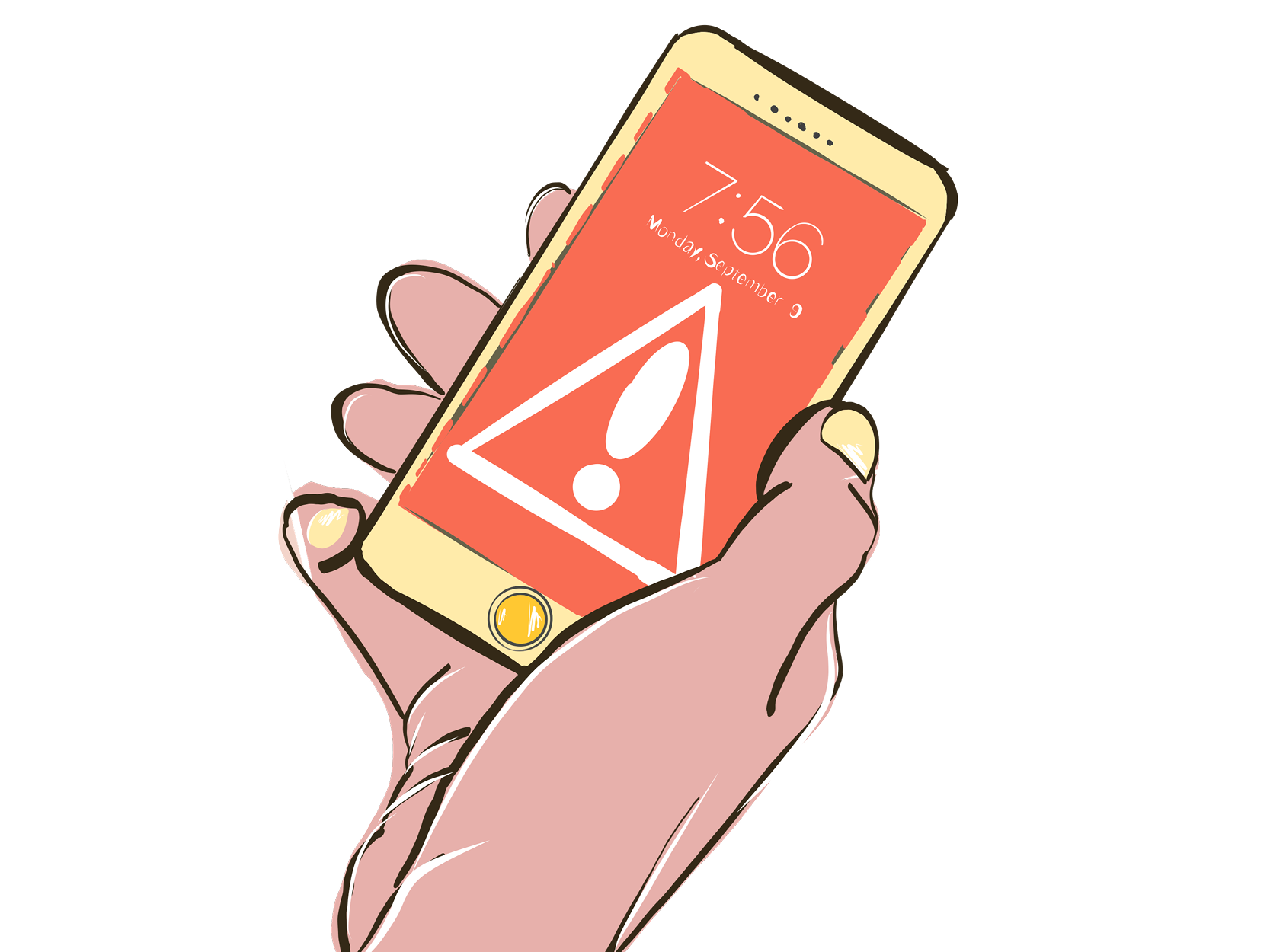Best Emergency Information Sources
From Text Alerts to the Radio Ready System, There Are Options

During an emergency, Santa Barbara officials and members of the media communicate information and instructions to the public in a number of ways. Here’s a list of reliable sources. But remember: Be aware of your surroundings, and if you ever feel in danger, DO NOT wait for an alert to protect yourself.
Digital and Analog
Aware & Prepare: This is the county’s main public-alert tool. It sends warnings to residents via text messages, emails, cell phone calls, and landline calls. In order to receive these official messages, you must sign up at readysbc.org. Click the red “Register for Alerts” icon at the top of the page. As county officials say: “If we can’t reach you, we can’t alert you.”
Nixle: Nixle is a community information service used across the U.S. that contracts with local public-safety agencies to send alerts to residents through text messages and social media networks. To sign up, simply text your zip code to 888777. Spanish translation is available.
Wireless Emergency Alerts (WEA): WEA is a federal public-messaging tool that allows residents with certain wireless phones and other mobile devices to receive geographically targeted, text-like messages that warn of imminent safety threats. You don’t need to sign up for WEA — cell phone companies volunteer to participate in the system, so check with yours to find out if they do.
Emergency Alert System (EAS): EAS messages are transmitted via radio and television by participating broadcasters. They contain an audio message and/or scrolling text. You don’t have to sign up to receive these types of alerts, but you do need to be tuned in to a local TV channel or radio station to get them.
Media
Santa Barbara news agencies report on emergencies and frequently re-broadcast official county messages. Here are the region’s most trusted sources:
Television: KEYT (Channel 3), KSBY (Channel 6), KKFX (Channel 11), and KCOY (Channel 12)
Print and Online: Santa Barbara Independent (independent.com), EdHat (edhat.com), Santa Maria Times (santamariatimes.com), Noozhawk (noozhawk.com)
Radio: KCLU (FM 88.3), KDRW (FM 88.7), KCSB (FM 91.9), KIST (FM 107.7 *Spanish)
Radio
Radio Ready: When the power is out and the internet is down, a radio may be your last hope for receiving critical information. The county partners with a network of Radio Ready stations to broadcast emergency notices with the help of generators and satellite equipment. Be sure you own a hand-crank or battery-operated radio, and keep extra batteries handy.
FM Stations:
Santa Barbara/South Coast — KCLU 88.3 and 102.3; KOSJ 94.1; KTYD 99.9
Santa Maria — KCLU 89.7 and 92.1; KCBX 99.5
Lompoc — KCBX 95.1
Santa Ynez/Solvang — KCBX 90.9; KSYV 96.7; KRAZ 105.9
Countywide — KSPE 94.5; KIST 107.7 *Spanish
AM Stations:
Santa Barbara/South Coast — KOSJ 1490; KZSB 1290; KCLU 1340
Santa Maria — KTMS 990; KUHL 1440
NOAA Weather Radio All Hazards (NWR): NWR is a nationwide network of radio stations broadcasting continuous weather information directly from the nearest National Weather Service office. To receive the Santa Barbara County broadcast, tune your weather radio to the SAME code: 006083.
Social Media
Twitter is often the most timely social media tool in a disaster. Here are the accounts to follow:
• Office of Emergency Management (@SBCountyOEM)
• County of Santa Barbara (@countyofsb)
• County of Santa Barbara *Spanish (@csbenespanol)
• Santa Barbara County Fire Department (@SBCOUNTYFIRE)
• Santa Barbara Sheriff’s Office (@sbsheriff)
• National Weather Service, Los Angeles (@NWSLosAngeles)
• CHP Coastal Division (@CHP_Coastal)
Websites
There are only a handful to remember:
• ReadySBC.org: The clearinghouse for all official county information. It contains a ton of resources, from guides to maps to important phone numbers and addresses. Whether you’re in the mode of disaster prep or recovery, all roads lead to ReadySBC.org.
• SantaBarbaraCA.gov: The City of Santa Barbara’s Office of Emergency Services features helpful suggestions on assembling supply kits, preparing your business, shutting off utilities, and so on.
• RedCross.org: Perhaps your best source for general health and safety information in crisis situations. Be sure to search through the Central California Region section as well.
• ReadySBC.org: The Department of Homeland Security’s user-friendly site focused entirely on helping you prepare yourself and your family for any type of disaster.
• EarthquakeCountry.org: The in-depth website for the Earthquake Country Alliance (ECA), a public-private partnership of people, organizations, and regional associations devoted to helping residents get ready for and survive the next Big One.
Communication Tips
• Text is best when using a mobile phone. If you have to make a call, keep it brief. This will minimize network congestion and conserve battery power. Wait 10 seconds before redialing a number. If you redial too quickly, the data from the handset to the cell sites does not have enough time to clear, which clogs the network.
• Conserve your mobile phone battery by reducing the brightness of your screen, placing your phone in airplane mode, and closing apps you do not need. Keep charged external batteries, a car phone charger, and/or a solar charger available for backup power.
• Maintain a household landline and analog phone (with battery backup if it has a cordless receiver) that can be used when mobile service is unavailable.
• If you evacuate and have a call-forwarding feature on your home landline, forward your home line to your mobile phone.
• Use the internet to communicate by email, Twitter, Facebook, and other social media networks. The internet can also be used for telephone calls through Voice over Internet Protocol (VoIP).
• If you do not have a mobile phone, buy and keep a prepaid phone card
• Use a pay phone if available. The line may be less congested because pay phones don’t rely on electricity or mobile networks.



